You’ll plan your route, you’ll pack your kit, and you’ll respect the river — but there’s more to contemplate before you set up camp at Horseshoe Bend. You’ll need to choose between limited campground spaces and true backcountry spots, time your visit for milder weather, and prepare for minimal services and changing conditions. Keep going for practical tips on permits, gear, safety, and how to leave no trace so your trip stays smooth and low-impact.
Trip Overview and Route Details
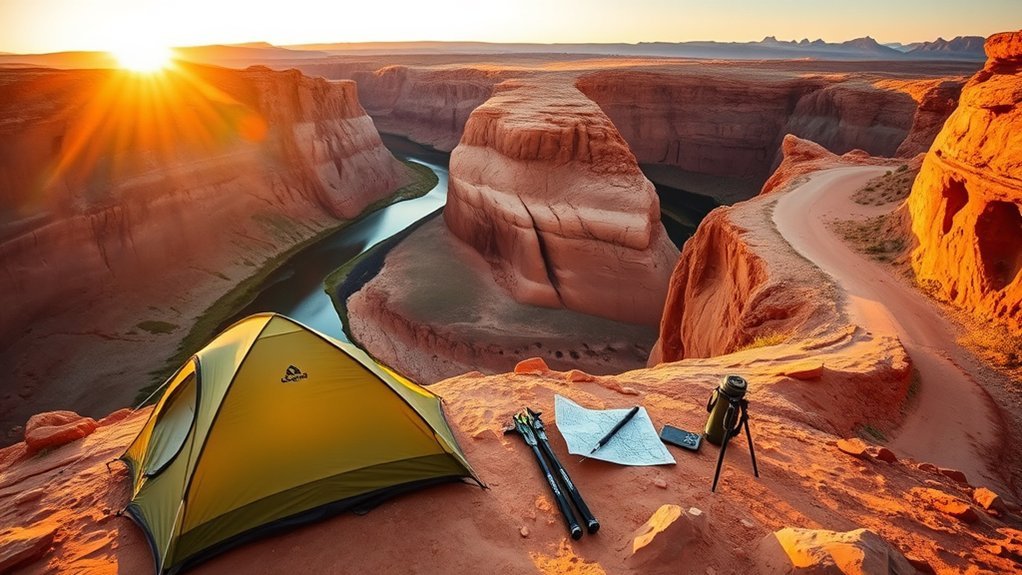
If you’re planning the Horseshoe Bend kayaking trip, expect a scenic 15-mile float from Lees Ferry that typically takes 9–10 hours with stops for short hikes and exploration. You’ll follow the Colorado River along a scenic route, paddling past sandstone cliffs and designated campsites. Camping at Horseshoe Bend means choosing from five first come, first served campgrounds — Ferry Swale and 8 Mile Campground among them — each with pit toilets and fire pits. Start in early mornings to beat winds and use a backhaul service if you want to avoid upstream paddling; it’s about $75 per person. Pack dry bags, layers, and essentials for Kayak Horseshoe Bend trips so you can comfortably paddle back to Lees Ferry after a full day.
Best Time to Visit and Weather Considerations
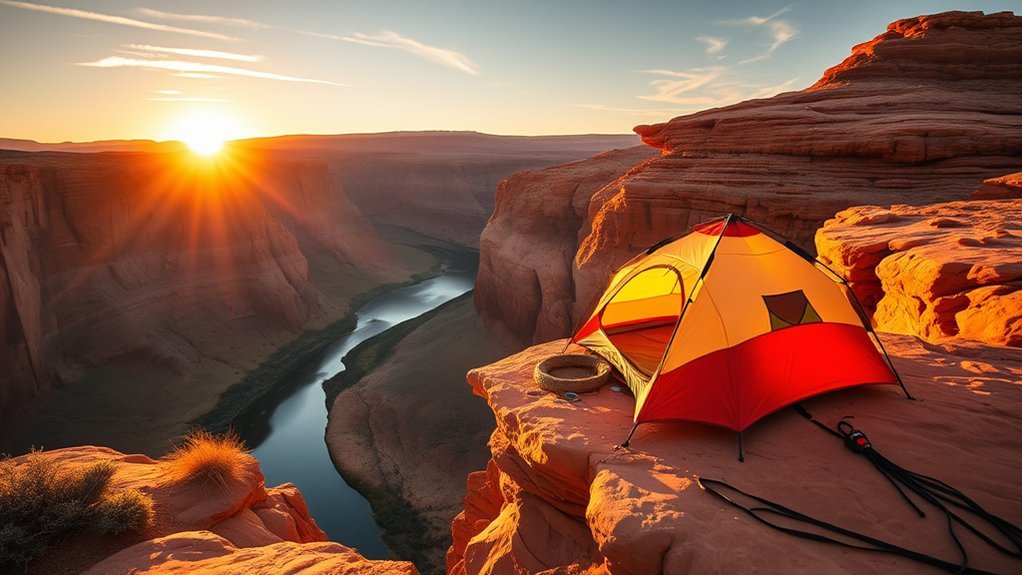
Because weather drives comfort and safety, plan your Horseshoe Bend trip for spring (April–June) or fall (September–October), when temperatures stay milder and winds are generally less severe. These months are the best time to visit for camping overnight and paddling without the risks of extreme heat or late-afternoon gusts. Expect fluctuating temperatures in spring and pack layers; October often brings cooler nighttime temperatures, so bring a warm sleeping bag. Monitor weather conditions closely—spring can mean higher flows and summer carries potential for monsoon storms and heat spikes up to 113°F. Schedule paddling in the morning to avoid strong winds and changing river conditions. Prepare for seasonal changes and adjust gear and timing to keep your trip safe and comfortable.
Backhaul Services, Parking, and Nearby Lodging
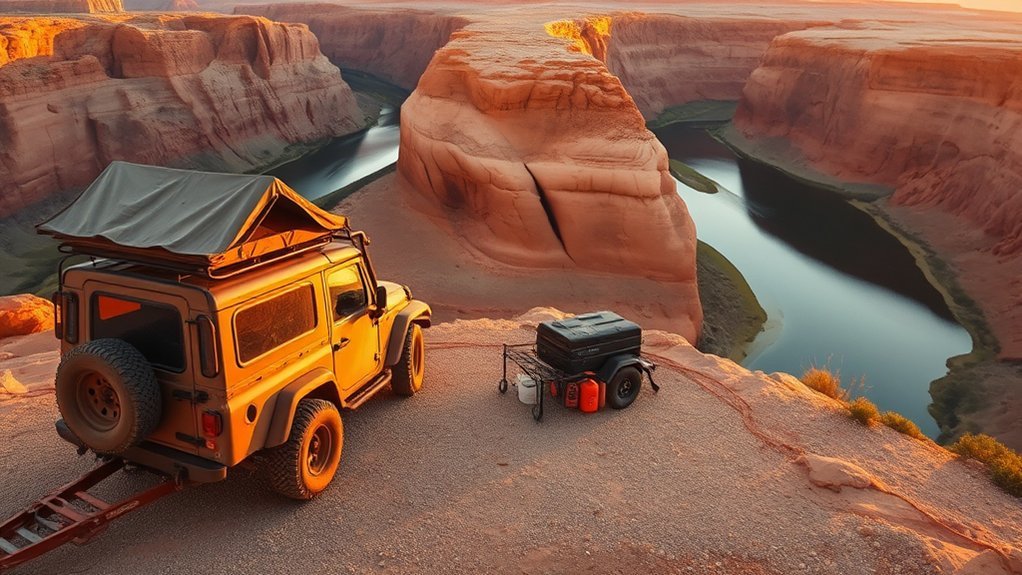
When planning your trip, factor in logistics like the Lees Ferry backhaul, parking rules, and nearby lodging so you won’t waste time or miss your launch window. Use backhaul services (about $75) to be dropped 15 miles upstream for easier downstream paddling. Buy a Glen Canyon National Recreation Area pass ($30) for parking at Lees Ferry; overnight spots are separate from day-use and have limited availability. Aim for early arrival — get to the ferry dock at least one hour early for kayak preparations and check-in. If lots fill, consider nearby lodging in Page (Lees Ferry Lodge, Marble Canyon Lodge, Lake Powell Resort) before or after your camping trip. Respect cold water risks and claim preferred spots quickly.
| Item | Tip |
|---|---|
| Backhaul services | ~$75/person |
| Parking at Lees Ferry | Pass required |
| Early arrival | 1+ hour prep |
| Nearby lodging | Page options nearby |
Campsites, Rules, and Permit Information
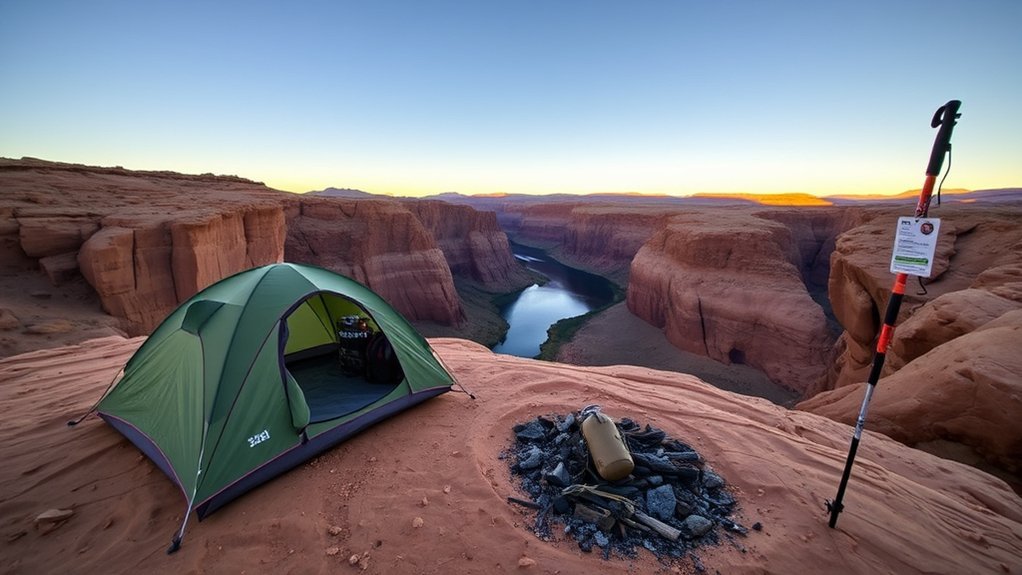
Although you don’t need a camping permit at Horseshoe Bend, plan for a small fee to use Lees Ferry as your launch point and expect only six designated first-come, first-served campsites along the river. You’ll find basic pit toilets at each site; bring supplies and respect capacity limits posted onsite. Popular spots like Ferry Swale and 8 Mile Campground give more privacy and shade, so arrive early to claim them. Follow Leave No Trace: pack out trash, avoid disturbing vegetation, and minimize campfire impacts. Check local regulations before you go to confirm group size and any seasonal restrictions. Camping here is simple but limited—respect rules, honor capacity limits, and pay the fee at Lees Ferry.
What to Pack and How to Secure Your Gear
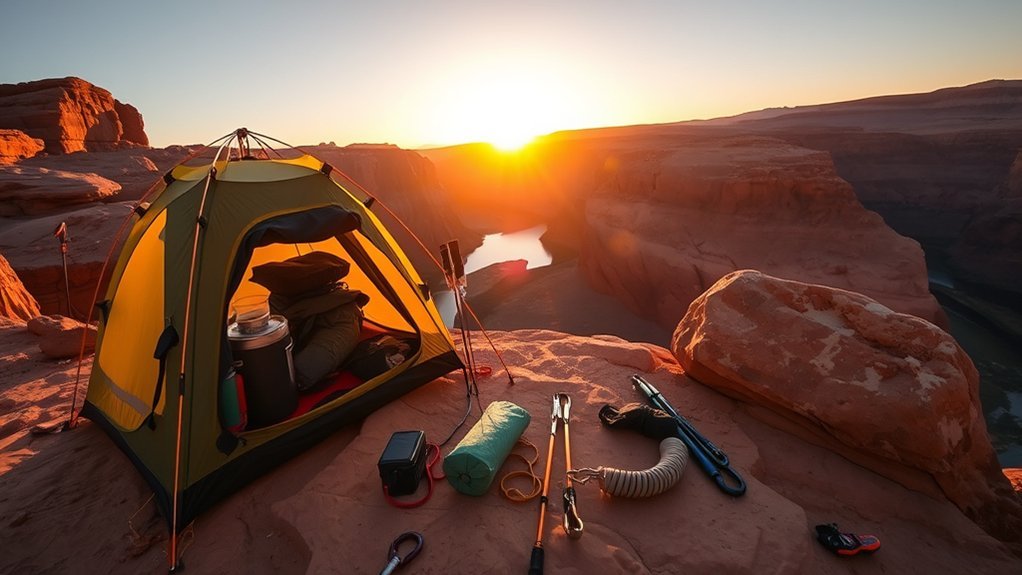
If you want your trip to stay comfortable and worry-free, pack a range of dry bags in several sizes and organize them by use—cooking gear, clothing, electronics—so you can grab what you need fast. Use G.O.A.T Totes for lightweight gear transport and distribute weight evenly for stable paddleboard travel. Secure your gear with compression straps for larger dry bags and carabiners for small items; clip them to deck lines or a PFD when necessary. Put electronics in a dedicated waterproof case and test access during a home dry run so you know where essentials live. For camping along the Grand Canyon and the river, prioritize safety: keep flotation close, keep items roped or clipped, and practice loading to avoid surprises on the water.
Safety, Leave No Trace, and River Etiquette
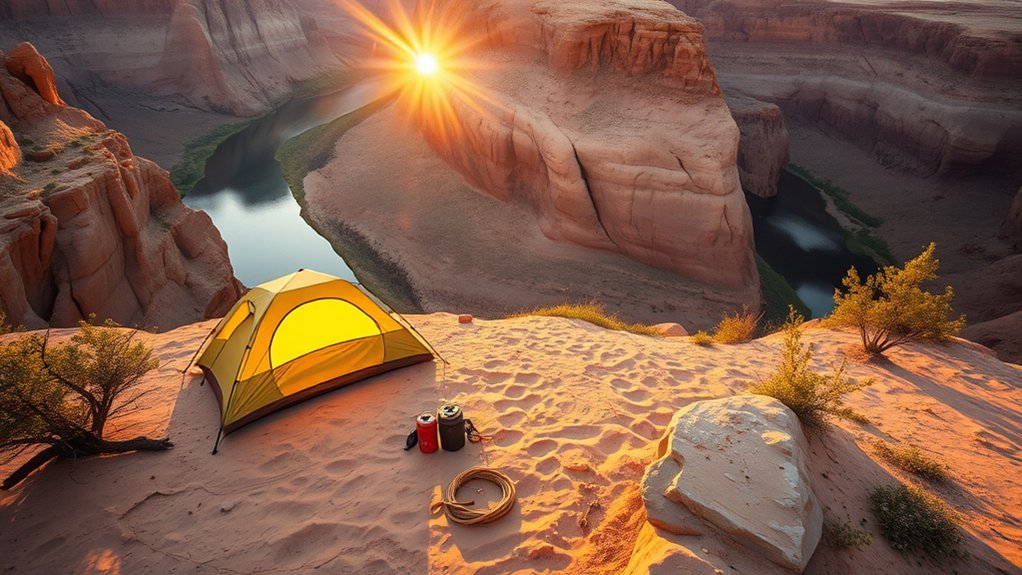
Because the canyon amplifies sound and conditions can change fast, you should keep safety, Leave No Trace, and river etiquette at the front of every decision: wear a properly fitted PFD whenever you’re on the water, check forecast and river conditions before launch, and keep noise low to preserve the quiet for other paddlers and wildlife. Stay vigilant about water conditions and weather; currents shift and add challenge to paddling. Pack out trash, minimize campfire impact, and site tents on durable surfaces to follow Leave No Trace. Give wildlife plenty of space—observe bighorn sheep and wild horses from a distance to reduce stress. Lower noise levels, show respect at campsites, and practice courteous river etiquette so everyone enjoys safe, sustainable camping and paddling.
Frequently Asked Questions
What Is the Difference Between Camping and Backcountry Camping?
Camping basics mean you use established sites, amenities, and easier campsite selection; backcountry essentials force you to carry gear, master gear comparisons, cooking methods, safety tips, weather preparedness, wildlife encounters, follow local regulations, and minimize environmental impact.
Is Kayaking Horseshoe Bend Worth It?
Yes — you’ll love the kayaking experience: scenic views, wildlife sightings, photography spots and guided tours enhance it. Follow safety tips, check river conditions and local regulations, pack gear essentials, and choose the best time for calmer water.
Does Horseshoe Bend Campground Have Showers?
No — Horseshoe Bend campground lacks showers, so you’ll need to plan alternatives. Consider Horseshoe Bend amenities, Camping facilities, Shower availability, Campground cleanliness, Water sources, Campground fees, Camping regulations, Nearby attractions, Wildlife encounters, Visitor experiences.
Do I Need a Permit to Kayak in the Horseshoe Bend?
You don’t need a special permit to kayak Horseshoe Bend, but you’ll need a Glen Canyon pass; prioritize kayak safety, follow local regulations, consider rental services or guided tours, plan launch points, equipment rentals, best times, group size, environmental concerns.
Conclusion
So you want to rough it at Horseshoe Bend? Good—plan ahead unless you enjoy surprise sand, sunburn, and wildlife critique. Pick spring or fall, bring dry bags, proper cooking gear, and a sense of humor when the parking lot fills before sunrise. Follow permits, stash food away from curious critters, and practice Leave No Trace unless you fancy being the campsite cautionary tale. Respect the river, respect the rules, and leave it better than you found it.

